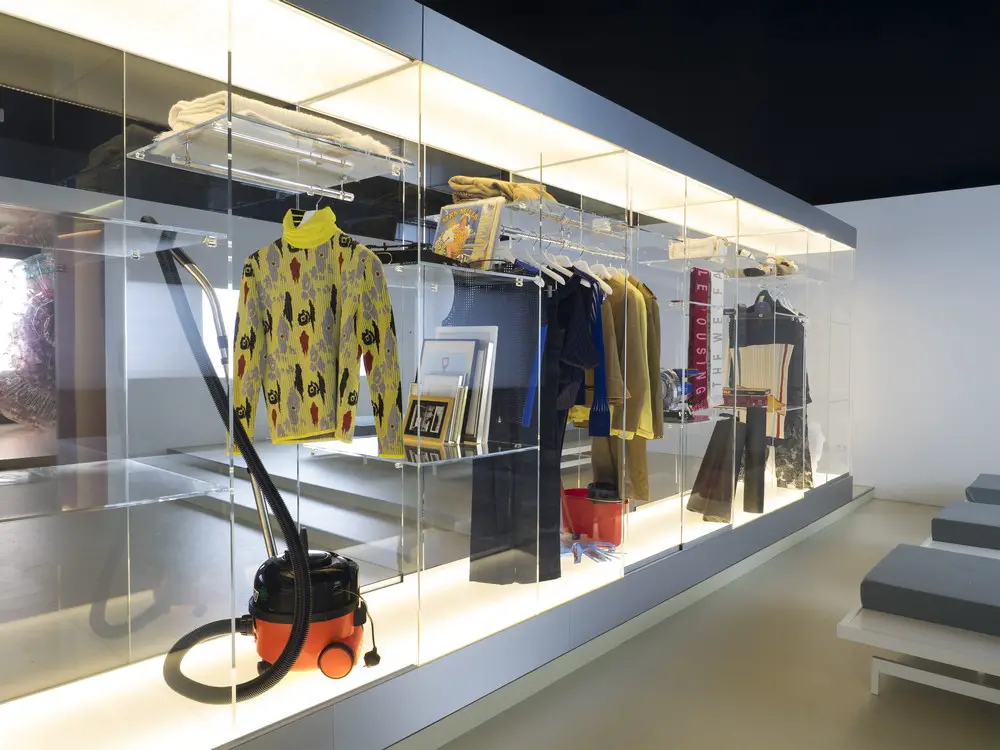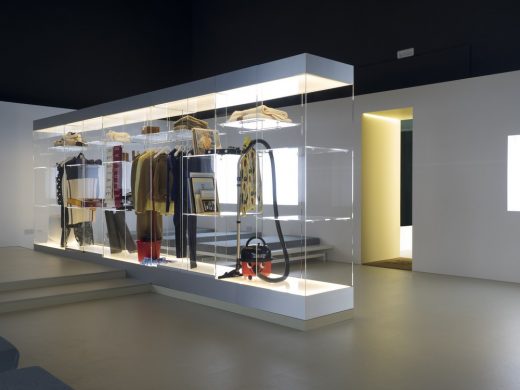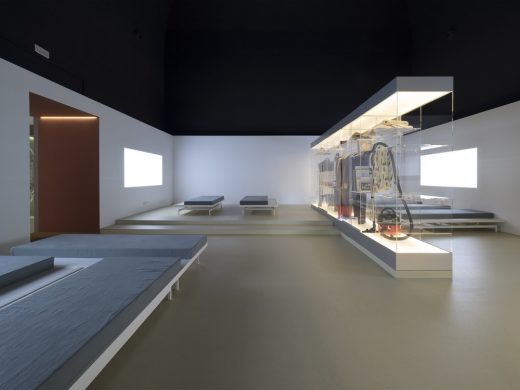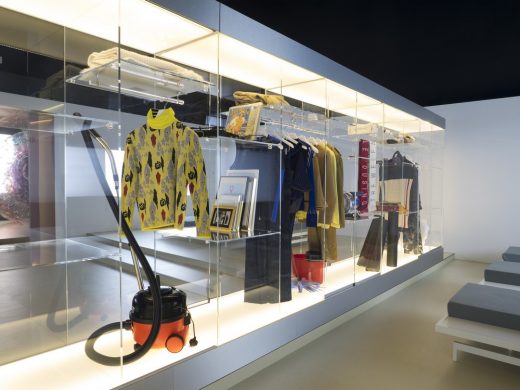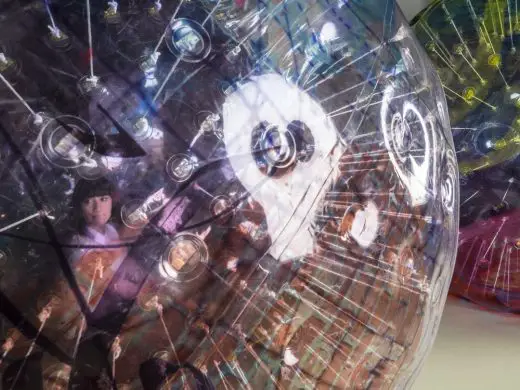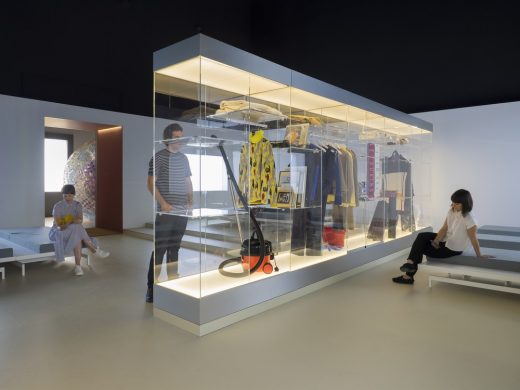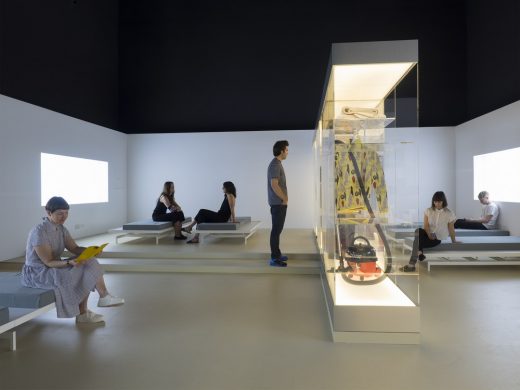British Pavilion Venice, Architect, Photos, UK Architecture Installation Design News
British Pavilion Venice
Home Economics Exhibition: UK at the Architecture Biennale – architectural design show in Italy
8 Dec 2016
British Pavilion at the Venice Architecture Biennale
British Pavilion attracts 145,620 visitors at the Venice Architecture Biennale
British Pavilion attracts 145,620 visitors at the 15th International Architecture Exhibition – la Biennale di Venezia
After a successful six-month run, this year’s British Pavilion exhibition Home Economics at the Venice Architecture Biennale has now closed. The exhibition opened to the public on 28 May and received more than 145,000 visitors when it closed on 27 November 2016.
2016 Curatorial Team British Pavilion Venice Architecture Biennale:(l-r) Shumi Bose, Jack Self, Finn Williams
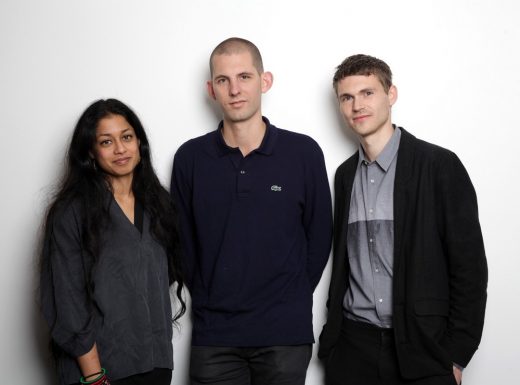
photo James O Jenkins_courtesy British Council
Director of Architecture Design Fashion at the British Council and Commissioner of the British Pavilion, Sarah Mann said:
‘It is really encouraging to see that our exhibition, Home Economics, has resonated with so many people, sparking a wider debate about the future of domestic life in the UK. The Biennale offers the British Council the opportunity to contribute to global contemporary architectural discourse on an international platform, working collaboratively across borders to showcase critical ideas and research. The increase in visitors to the pavilion this year is a clear signal that the theme of the biennale addressed vital and timely questions about the role of architecture in a complex world.’
Photos copyright British Council by Cristiano Corte:
Home Economics responded to the biennale curator Alejandro Aravena’s theme Reporting from the Front by tackling the frontline of British architecture: the home. The curators, Shumi Bose, Jack Self and Finn Williams invited established and emerging artists, architects and designers to produce immersive 1:1 environments to propose new models for the home. The exhibition unfolded through a series of five architectural propositions, designed around incremental amounts of time: Hours, Days, Months, Years and Decades.
Overall, the Venice Architecture Biennale welcomed more than 270,000 visitors and the British Pavilion played host to a rich programme of talks and events, including a series of workshops co-produced with the Flanders Architecture Institute, Creative Industries Fund NL and the Deutsche Architekturmuseum.
In July, the Guardian launched a film series, How We Live Now, interrogating the places that people call home around the world and, in November, the British Council collaborated with Creative Dundee and the Architecture Fringe on a panel discussion titled ‘What is the Future of Domestic Life?’ at Dundee Contemporary Arts.
The curators of Home Economics, made this statement:
‘It has been an honour to represent Britain at the Venice Architecture Biennale, and an invaluable experience working with the British Council and our team of collaborators to produce Home Economics. The exhibition was designed to challenge the status quo, asking important questions of British society and architectural culture in the process. We are grateful for the platform the British Pavilion has given us to bring these ideas to a global audience, and particularly pleased that a number of the collaborations and concepts from Home Economics are already resulting in concrete responses to the housing crisis back in the UK.’
British Pavilion Exterior, Home Economics at the British Pavilion, Venice Architecture Biennale 2016:
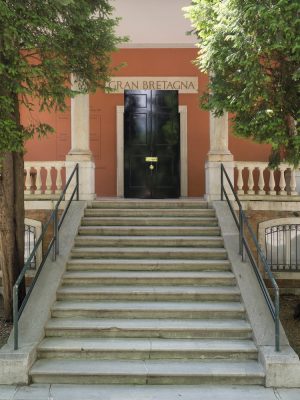
In addition, this year the British Council ran the second edition of the Venice Fellowships programme – a steward-study programme in partnership with architecture schools and arts institutions from around the UK including Manchester University, Arts University Bournemouth and University of Arts London.
Each of the 50 students and young professionals on the programme spent one month in Venice during the biennale, invigilating the pavilion and conducting site-specific and archival research around the biennale theme, Reporting from the Front and Home Economics, exploring sub-themes such as temporal occupation; the front line of architecture, and domestic vs. civic.
Speaking about the Fellowships programme, Gwen Webber, Project Manager of the British Pavilion, said:
‘Building on the success of the inaugural Venice Fellowships in 2014, this year we worked with RIBA to open the programme up to a cross-section of creative professionals in addition to university students, enriching the experience for all participants. The chance to study topical themes, live in Venice and contribute to a wider set of ideas and research remains a unique and valuable opportunity.’
25 February 2022
British Pavilion 2023 at the Venice Architecture Biennale
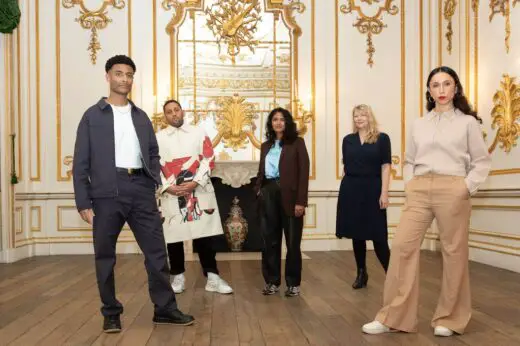
British Pavilion 2023 Venice
14 Jul 2010
British Pavilion Venice Biennale
COLLABORATIONS ANNOUNCED FOR BRITISH PAVILION AT 12TH VENICE ARCHITECTURE BIENNALE
The British Council announce a series of collaborations for the British Pavilion at the Venice Architecture Biennale under the artistic direction of London based practice, muf architecture/art Llp. The Biennale will run from 29 Aug – 21 Nov 2010.
British Pavilion
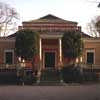
photo © John Riddy
The British Pavilion has been developed by muf as a series of ‘Made in Venice’ collaborations:
The Lagoon Room
Collaborators: Environmental scientist, Jane da Mosto; life scientist, Lorenzo Bonometto; Venice Natural History Museum; Venice in Peril; Cambridge University.
Two Way Traffic
Collaborators: Artist-philosopher Wolfgang Scheppe; cultural historian Robert Hewison; Ruskin Library.
The Stadium of Close Looking
Collaborators: Specialist gondola builders, Spazio Legno; Venice based artists collective, ReBiennale.
The Child in the City/The Schools of Venice
Collaborator: artist Lottie Child, working with the teachers and pupils of the schools of Venice.
The Pavilion, which has been ironically reframed as Villa Frankenstein, making direct reference to the work of John Ruskin, will act as a stage for drawing, discussion and scientific enquiry. It will put forward the proposition that meaningful strategies for development can only come from understanding a place in detail.
Villa Frankenstein will enable an exchange of ideas between Venice and the UK, examining not only the city’s relationship with the UK, but the situation of Venice itself as archipelago and sinking man-made city, a series of mud banks that have given birth to one of the most iconic and alluring architectures in the world.
Debates, workshops, drawing classes and scientific discussions will take place during the three months of the Biennale, which will lead to a catalogue, edited by Adrian Dannatt, to be published in three chapters across the period of the Biennale, acting as a further creative platform to inform thinking for London, as it moves towards 2012.
Vicky Richardson, Director of Architecture, Fashion and Design, said: “Responding to Sejima’s call for an architecture grounded in its use by people, muf’s approach to the British Pavilion blurs the boundaries between the exhibit and the city, moving Venice into the Pavilion and taking the Pavilion out into the surrounding areas, creating a long-term relationship with the city and its people and informing our future work in the UK.“
Liza Fior, Founding Partner, muf architecture/art Llp, said: “From John Ruskin and the Stones of Venice to Ralph Rumney, the only British founding member of the Situationist International, the British have been obsessed with Venice and in different ways have taken Venice home. This two-way traffic of ideas, knowledge and experience has left its mark on both archipelagoes. Through Villa Frankenstein, we hope to explore and showcase the methodology behind our work, making multi-purpose public spaces that negotiate between the needs of different communities.”
About the team
Vicky Richardson, Commissioner, British Pavilion
Vicky Richardson was appointed Director of Architecture, Fashion and Design at the British Council in March 2010. Previously she had worked as an architecture and design journalist and moved to the British Council from her position as editor of leading architecture and design magazine Blueprint. Having studied fine art at Central St Martins and Chelsea School of Art and Design, she went on to gain a BA in architecture at the University of Westminster. Her book New Vernacular Architecture was published in 2001 by Laurence King Publishing. Richardson was previously deputy editor of RIBA Journal and editor of Public Service and Local Government magazine. She became editor of Blueprint in March 2004. In 2007 she was shortlisted for Editor of the Year by the Periodical Publishing Association. She is a trustee of the educational charity, the Campaign for Drawing and a member of London Mayor Boris Johnson’s Cultural Strategy Group
muf architecture/art Llp, Artistic Director, British Pavilion
muf was established in London in 1995. The practice has an international reputation for its site-specific research driven public projects, which negotiate between the built and social fabric; between public and private spaces. Current projects are predominantly focused in East London around the approaches and margins of the olympic site, but not exclusively so. Projects range from urban design schemes to temporary interventions, landscapes and buildings. Awards for muf projects include the 2008 European Prize for Public Space (the first UK winner) for a new ‘town square’ in Barking, East London. Publications include This is What We Do: a muf manual, the partners are visiting professors at Yale where their last studio explored alternative legacies for London’s Olympic site.
muf
Lottie Child
Lottie Child is an artist based in London. She constructs situations that defy the traditional context of museum and gallery environments, focusing on behaviour in urban places. For the last ten years she has been developing her practise of ‘Street Training’ a form of extended research and performative intervention. Through Street Training, she explores how we use public space in creative, playful and sometimes subversive ways. She trains performers, police, planners and architects in the playful shaping of the streets at the social level.
Venice Architecture
Venice Architecture Designs – chronological list
Venice Architecture Walking Tours
Venice Biennale – Exhibitions, Designs, Images : main page
Venice Architecture Biennale 2010, Exhibit
The Pavilion Of Turkey – by curator Neyran Turan:
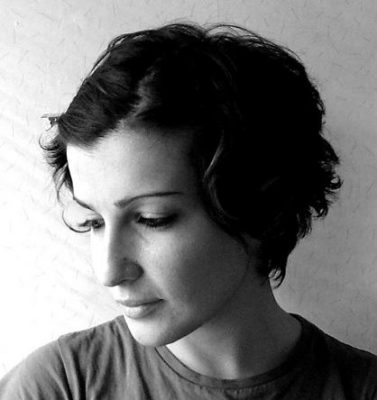
photo courtesy of IKSV
Venice Biennale Turkey Pavilion 2020
PiaveFutura, Padua, northern Italy
Design: David Chipperfield Architects Milan
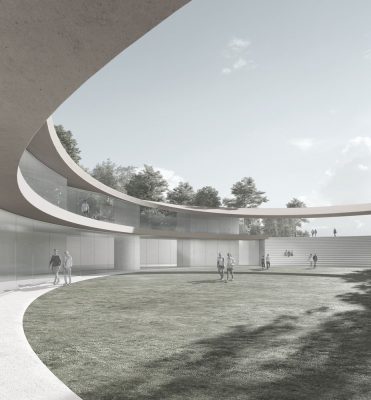
photo courtesy of architects
PiaveFutur Campus Building in Padua
Venice Biennale landscape installation by Gustafson Porter
Venice Architecture Biennale Danish Pavilion
Venice Architecture Biennale Irish Pavilion
Comments / photos for the British Pavilion at the Venice Architecture Biennale page welcome

